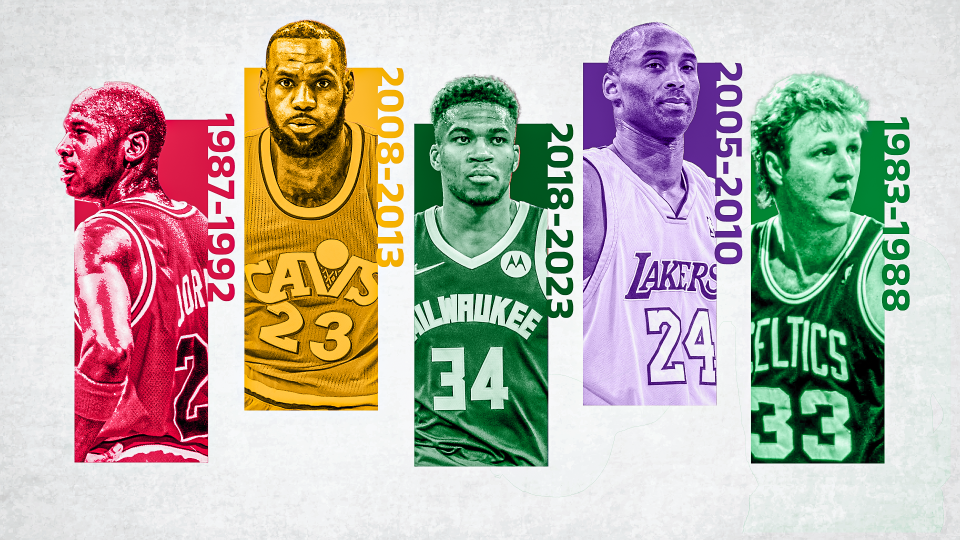
After LeBron James beat the scoring record, many started calling him the Longevity GOAT, some in a complimentary manner, others as a way to cop out from calling him the actual GOAT. (For what it’s worth, we still have Michael Jordan first in our own GOAT rankings, but it’s certainly not as easy of a decision as it once was.)
So that got us thinking about which of the NBA’s GOATs had the best five-year peak in NBA history, something we are going to take a look at today.
To determine when exactly each player’s peak took place, we used our own Global Rating Metric and went by each player’s best five continuous seasons.
Afterward, we used a panel of our writers and editors to vote on which five-year peaks by NBA legends were the best.
No. 1 might not come as a surprise but there are some very interesting results on the following list.
Michael Jordan (1987-1992)

1992 USA TODAY Sports
Regular season stats: 32.5 ppg, 6.6 rpg, 6.4 apg, 1.0 bpg, 2.8 spg, 53.1 FG%
Playoff stats: 34.5 ppg, 6.7 rpg, 6.8 apg, 51.3 FG%,
Accolades: Two NBA titles, two Finals MVPs, three MVPs, five All-Stars, one All-Star Game MVP, five All-NBA 1st Team selections, one Defensive Player of the Year award, five All-Defensive 1st Team selections, two Slam Dunk titles, one Olympic gold.
Overall GOAT ranking: No. 1
What does it say about Michael Jordan that his five-year peak only features two of his six championships seasons?
That’s because late 1980s Jordan was as good or maybe even better than the Jordan who won all those rings in the ’90s. Just look at the accolades of the 1987-88 season for proof, the opening season of his five-year peak in this exercise. That year, Jordan was named league MVP and Defensive Player of the Year, along with being an All-Star and 1st Team All-NBAer in a campaign where he averaged 35.0 points, 5.5 rebounds, 5.9 assists, 3.2 steals and 1.6 blocks while shooting 53.5 percent from the floor.
Madness.
As teammates got better and opponents got worse (i.e., the Celtics’ dynasty of the ’80s dying and the Bad Boys Pistons getting taken out by His Airness), Jordan’s dominance translated into rings. But the dominance was there before the championships.
We actually did research on which NBA players got snubbed most for MVP using our own Global Rating metric, and Jordan actually should have won nine MVPs, including in the five seasons of his five-year peak.
For the younger crowd, this is why many still consider Jordan the GOAT. It’s not just nostalgia.
Kareem Abdul-Jabbar (1970-1975)
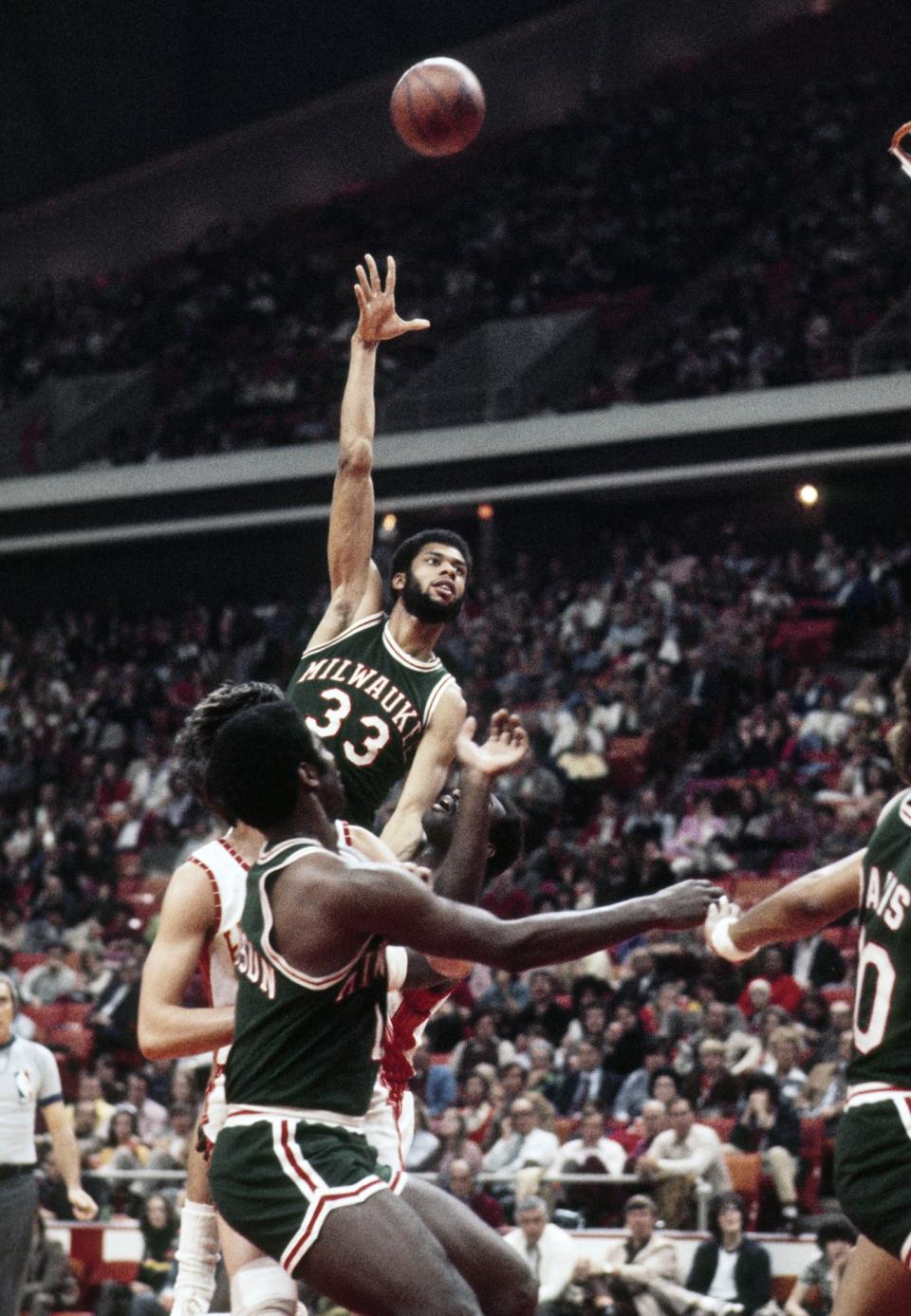
Manny Rubio-USA TODAY Sports
Regular season stats: 30.8 ppg, 15.5 rpg, 4.3 apg, 3.4 bpg, 1.2 spg, 55.3 FG%
Playoff stats: 28.5 ppg, 16.8 rpg, 4.0 apg, 2.4 bpg, 1.2 spg, 49.8 FG%
Accolades: One NBA title, five All-Stars, three MVPs, five All-Stars, four All-NBA 1st Team selections, one All-NBA 2nd Team selection, two All-Defensive 1st Teams, two All-Defensive 2nd Teams.
Overall GOAT ranking: No. 3
The fact that Kareem Abdul-Jabbar is, along with LeBron James, the longevity GOAT (the guy won Finals MVP in 1971, his age-23 season, and in 1984-85, his age-37 season, for crying out loud) while still having the second-highest peak, according to us, says it all.
Actually, according to Global Rating, this 1970-1975 span actually qualifies as the best stretch of play in NBA history, and it’s not hard to see why, considering he led the league in scoring twice in that span, in blocks once (it could have been more but for three of those seasons, the NBA wasn’t tracking blocks yet), was a three-time league MVP, a Finals MVP and won a championship.
He did all of that in his early 20s, by the way. Abdul-Jabbar truly is underrated in the GOAT debate.
Wilt Chamberlain (1965-1970)
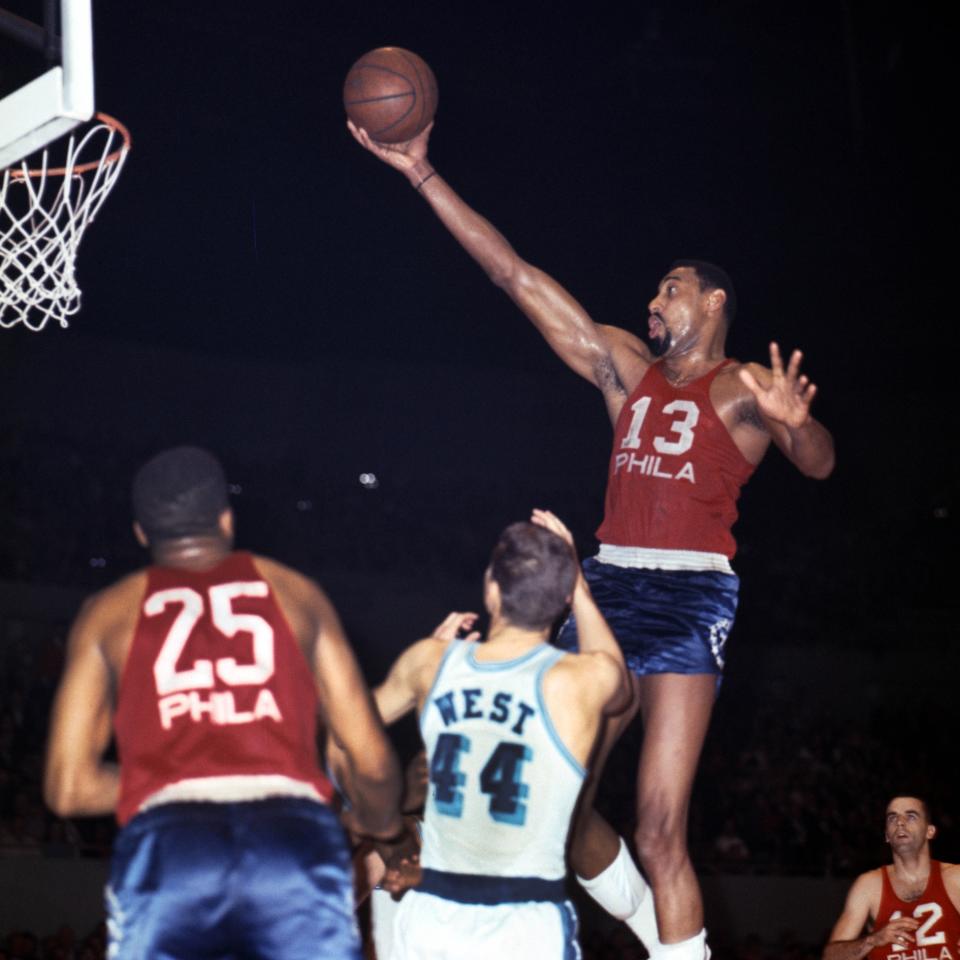
Darryl Norenberg-USA TODAY Sports
Regular season stats: 25.6 ppg, 23.2 rpg, 6.5 apg, 59.0 FG%
Playoff stats: 20.6 ppg, 25.4 rpg, 5.2 apg, 54.7 FG%
Accolades: One NBA title, three MVPs, four All-Stars, three All-NBA 1st Team selections.
Overall GOAT ranking: No. 6
This one is a bit of a bold call, but according to Global Rating, this five-year run from 1965-66 through 1969-1970 was the best stretch of Wilt Chamberlain’s illustrious career – and not the first five years of his career when he averaged 41.7 points (including 50.4 points in 1961-62) and 25.3 rebounds per game.
That’s because the early ’60s were played at an insane pace, with the game slowing down later in Chamberlain’s career, making his more humble numbers more impressive. At least Global Rating thinks so. He also didn’t have as much playoff success early on in his career, which also factors in.
Regardless, Chamberlain’s numbers in the late ’60s were nothing to sneeze at; he won three MVPs in that time frame and the first of his two career titles, too.
It’s truly awe-inspiring to consider Chamberlain had two five-year peaks that would be the best stretches of 99.9 percent of other players’ careers.
LeBron James (2008-2013)

David Richard-USA TODAY Sports
Regular season stats: 27.8 ppg, 7.6 rpg, 7.3 apg, 0.9 bpg, 1.7 spg, 51.8 FG%
Playoff stats: 28.3 ppg, 8.9 rpg, 6.4 apg, 1.0 bpg, 1.8 spg, 49.3 FG%
Accolades: Two NBA titles, two Finals MVPs, four MVPs, five All-Stars, one All-Star Game MVP, five All-NBA 1st Team selections, five All-Defensive 1st Team selections, one Olympic gold.
Overall GOAT ranking: No. 2
This stretch of LeBron James’ career might have been the most fun to watch of any James era, as he was still the most physically gifted player ever at that time, but was also learning how to win and impact games in even more ways than earlier on, when he was younger.
All four of James’ career league MVP awards came during this stretch, meaning he has more MVPs in his five-year peak than anybody else in this exercise. And he blatantly deserved 2010-11 MVP, too, but the media was too angry about him taking his talents to South Beach to reward him as the NBA’s best player, which he clearly was that year (26.7 points, 7.5 rebounds, 7.0 assists and 1.6 steals on 51.0 percent shooting)
Of course, we can’t mention that 2010-11 season without bringing up the blemish of the 2011 Finals, his first with the Miami Heat, when he put up just 17.8 points over a six-game defeat, looking totally flummoxed about how to score on the likes of Jason Kidd, JJ Barea and Brian Cardinal.
Even with that, though, James’ five-year peak is ridiculous, and one of the best the league has ever seen.
Shaquille O’Neal (1997-2002)
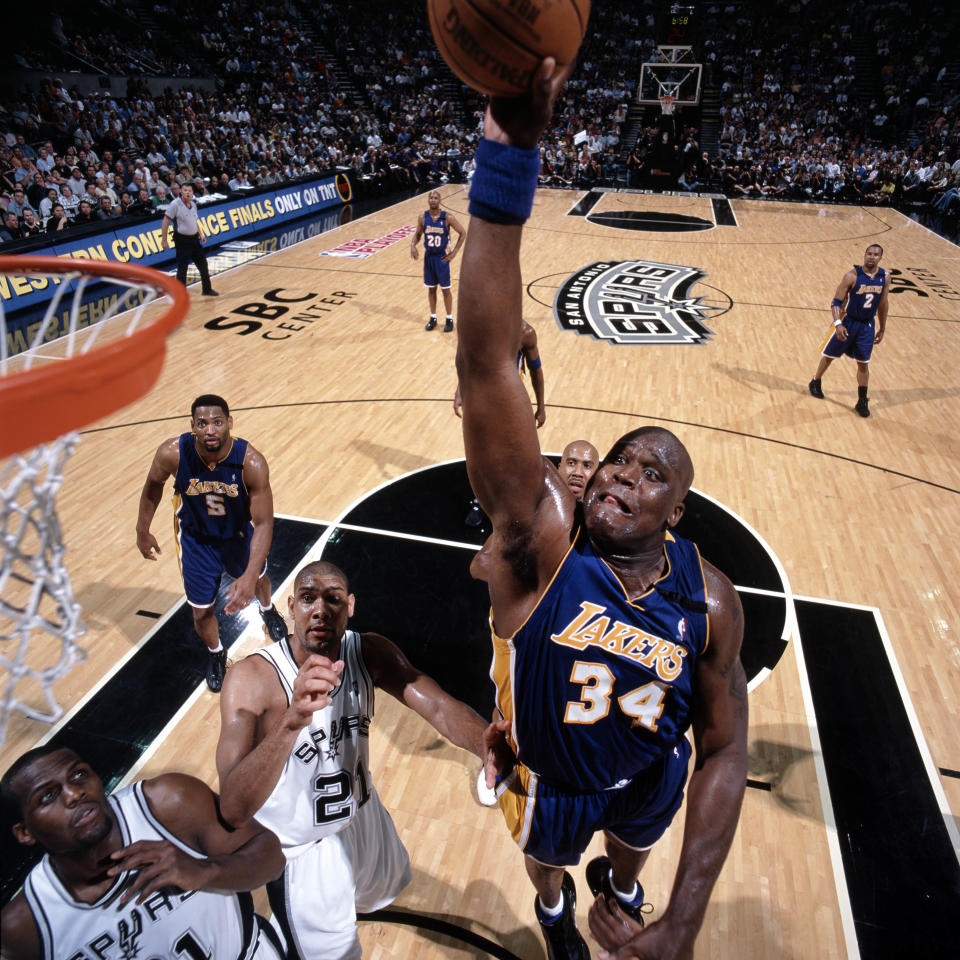
USA TODAY Sports
Regular season stats: 28.2 ppg, 12.0 rpg, 3.1 apg, 2.4 bpg, 0.6 spg, 57.7 FG%
Playoff stats: 29.7 ppg, 13.5 rpg, 2.9 apg, 2.5 bpg, 0.6 spg, 55.7 FG%
Accolades: Two NBA titles, two Finals MVPs, one MVP, five All-Stars, one All-Star Game MVP, four All-NBA 1st Team selections, one All-NBA 2nd Team selections, two All-Defensive 2nd Team selections.
Overall GOAT ranking: No. 9
There was a time in the early ’00s when it truly looked like Shaquille O’Neal, along with Kobe Bryant, were just going to keep winning forever, the former was that dominant during his five-year peak.
Literally, the only way O’Neal could be stopped back then was to foul him, as O’Neal never did figure out how best to shoot free throws.
He was enormous, freakishly athletic, long, a battering ram down low, had soft touch around the rim, could finish with either hand over either shoulder but usually was able to just bulldoze foes and power dunks in opponents’ faces.
Peak Shaq was truly one of a kind, and one of the most fun players to watch ever.
Larry Bird (1983-1988)

Dick Raphael-USA TODAY Sports
Regular season stats: 27.3 ppg, 9.8 rpg, 6.8 apg, 0.9 bpg, 1.8 spg, 51.2 FG%
Playoff stats: 26.3 ppg, 9.7 rpg, 6.7 apg, 0.9 bpg, 1.9 spg, 48.6 FG%
Accolades: Two NBA titles, two Finals MVPs, three MVPs, five All-Stars, five All-NBA 1st Team selections, three Three-point contest titles.
Overall GOAT ranking: No. 7
The last player to win three MVP awards in a row, a feat Nikola Jokic looks likely to match this season, Larry Bird was a true all-time great of the sport, with confident shooting ability, the prowess to make tough shots over good defense and underrated rebounding and playmaking touch.
Bird’s five-year peak from 1983-84 to 1987-88 features his three MVP campaigns, as well as two championship seasons with the Boston Celtics, a run in which the Hall-of-Fame forward led the league in free-throw accuracy three times and in nightly minutes twice.
Unfortunately, the last season of Bird’s five-year peak was basically the end of his prime, with Bird getting injured and seeing action in just six games the next season and never regaining that elite form.
Hakeem Olajuwon (1991-1996)
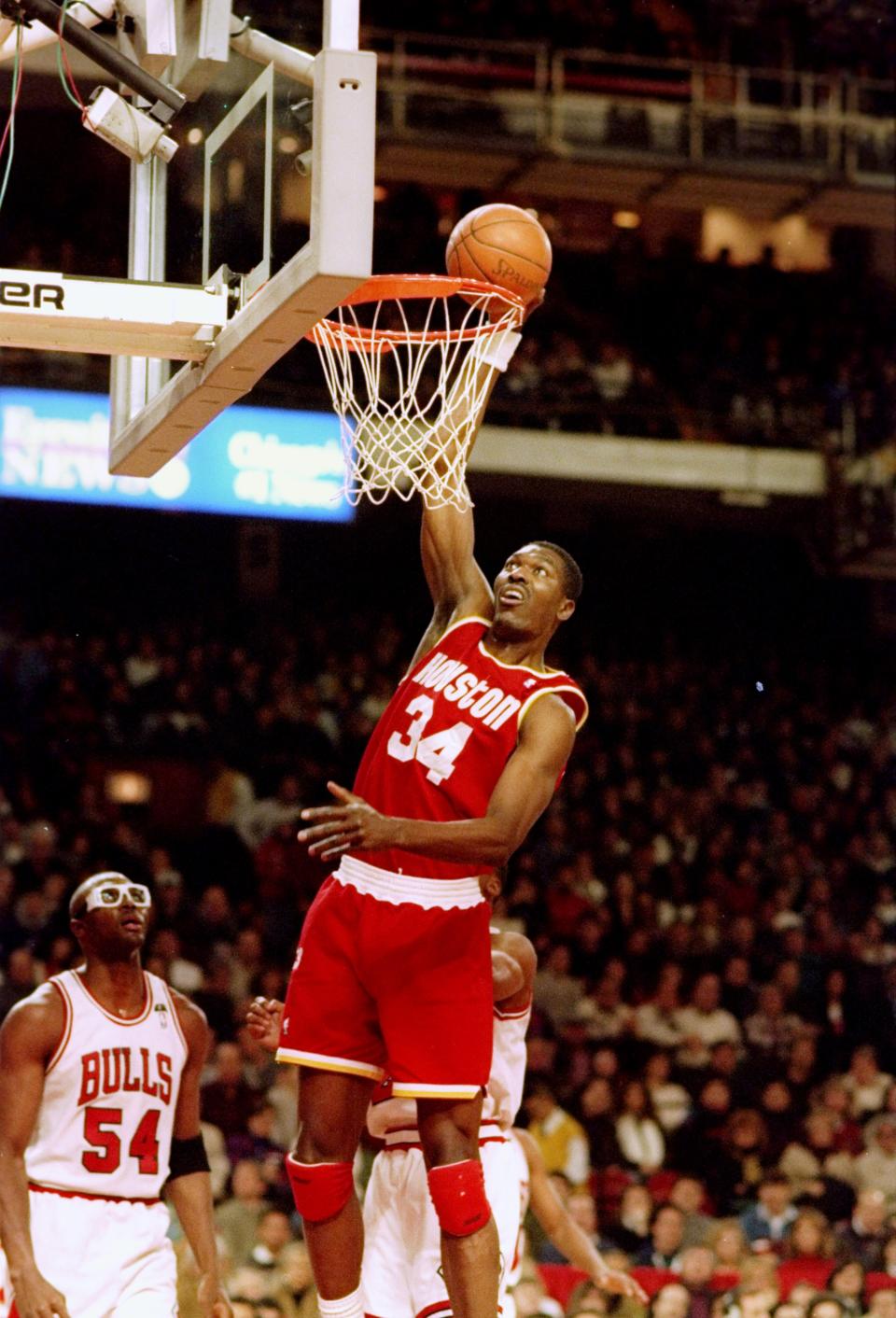
Allsport
Regular season stats: 26.0 ppg, 11.8 rpg, 3.3 apg, 3.7 bpg, 1.7 spg, 51.9 FG%
Playoff stats: 28.9 ppg, 11.1 rpg, 4.4 apg, 3.5 bpg, 1.6 spg, 52.3 FG%
Accolades: Two NBA titles, one MVP, two Finals MVPs, five All-Stars, two All-NBA 1st Team selections, one All-NBA 2nd team selection, one All-NBA 3rd team selection, two Defensive Player of the Year awards, two All-Defensive 1st Team selections, one All-Defensive 2nd Team selection.
Overall GOAT ranking: No. 11
A monster not just on offense but on defense, too, Hakeem Olajuwon is arguably the second-best player from a beloved era of the sport, the ’90s, and it might not be that arguable considering the legendary center won two championships in that decade, along with an abundance of other awards.
Olajuwon is one of just three players, along with Jordan and Giannis Antetokounmpo, to win league MVP and Defensive Player of the Year in the same season, a nearly impossible feat to pull off.
Even at a time with so many great centers, Olajuwon truly stood out as the best big man of his generation thanks to his ability to do just about anything on the floor besides shoot threes – a skill he might have mastered had the league gotten as spacing-obsessed as it is now just a few decades earlier.
Giannis Antetokounmpo (2018-2023)
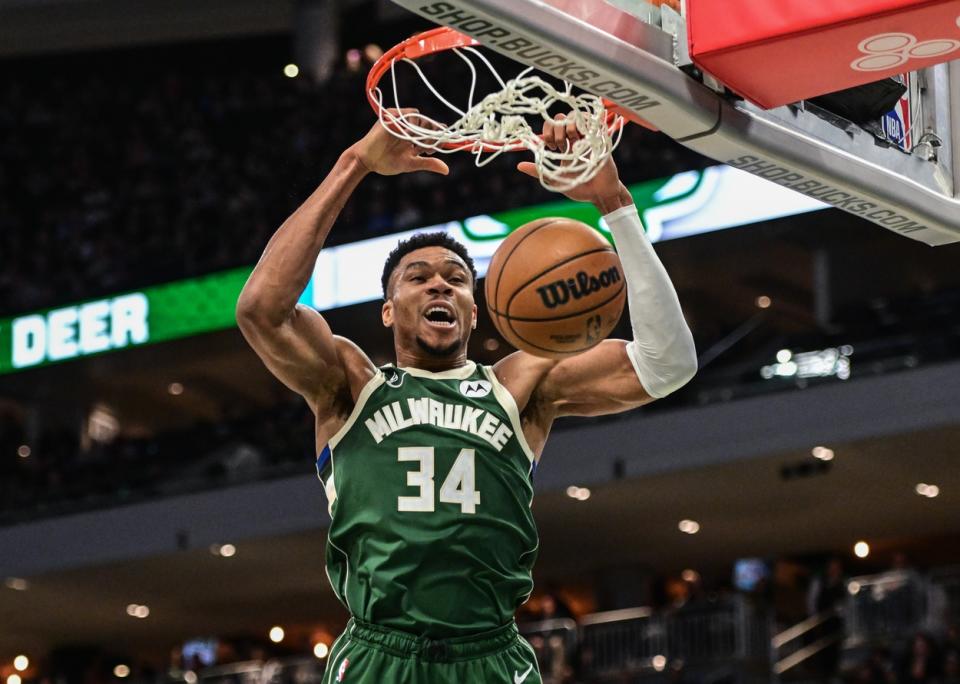
Benny Sieu-USA TODAY Sports
Regular season stats: 29.2 ppg, 12.2 rpg, 5.7 apg, 1.2 bpg, 1.1 spg, 55.9 FG%
Playoff stats: 28.7 ppg, 13.1 rpg, 5.5 apg, 1.4 bpg, 0.9 spg, 53.1 FG%
Accolades: One NBA title, two MVPs, one Finals MVP, three All-Stars, two All-NBA 1st team selections, one Defensive Player of the Year award, two All-NBA 1st defensive team selections.
Overall GOAT ranking: No. 22
Speaking of Antetokounmpo, he checks in here at No. 8, just the second active player to make the list so far. Just look at those stats and accolades to see how the Greek Freak was able to crack this list with so much of his prime still left to go.
One of three men ever to win MVP and Defensive Player of the Year in the same season, Antetokounmpo is an unstoppable force getting to the basket and has improved his short midrange jumper enough to make it a viable threat.
His game may look a bit sloppy at times and his three-pointer remains ugly but overall, few players right now dominate the way Antetokounmpo does, and none do it on both ends of the floor as effectively as the Bucks forward.
Bill Russell (1961-1966)
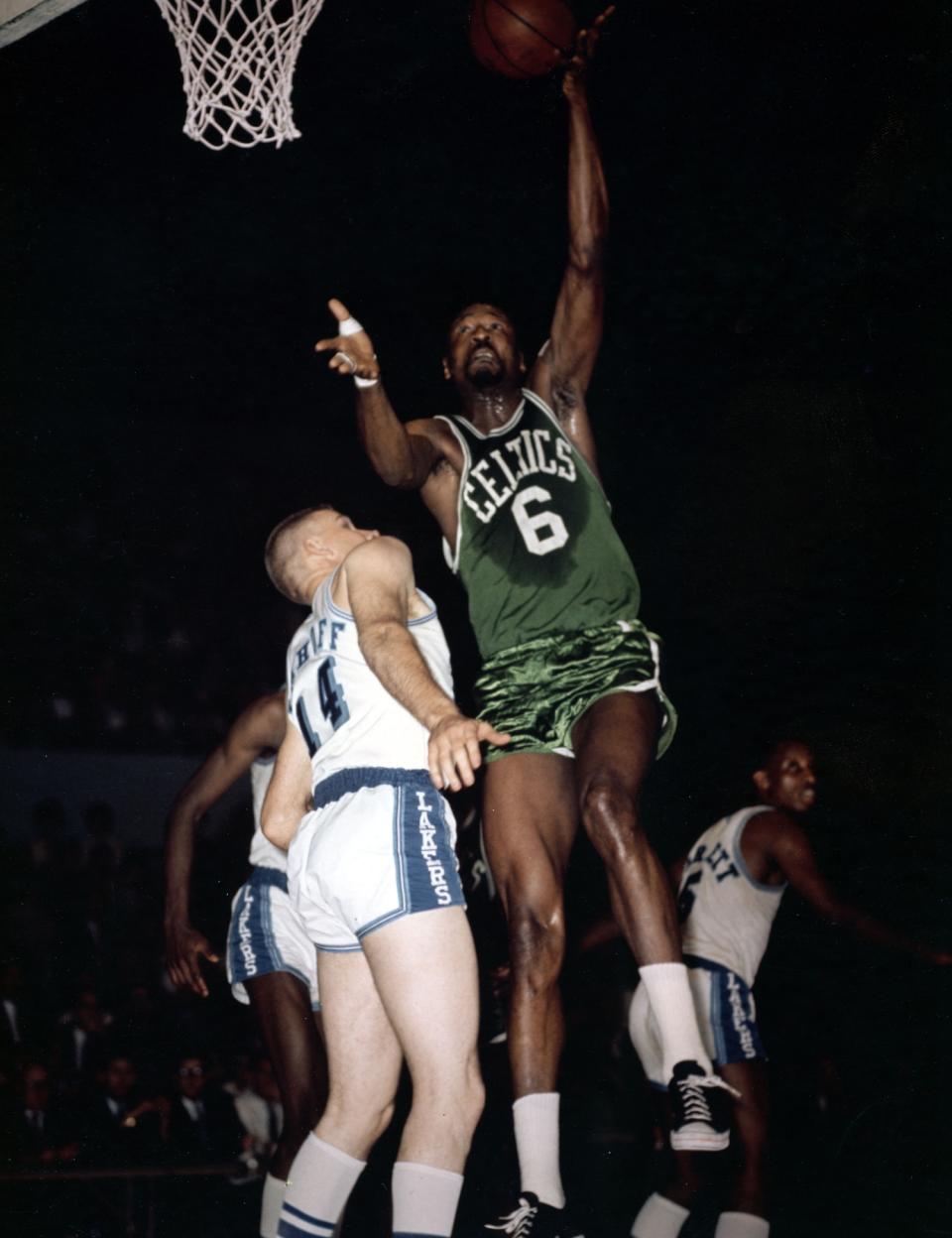
Darryl Norenberg-USA TODAY Sports
Regular season stats: 15.5 ppg, 23.8 rpg, 4.7 apg, 43.6 FG%
Playoff stats: 18.7 ppg, 25.7 rpg, 5.2 apg, 45.8 FG%
Accolades: Five NBA titles, three MVPs, five All-Stars, two All-NBA 1st Team selections, three All-NBA 2nd Team selections.
Overall GOAT ranking: No. 5
The winningest player in league history, Bill Russell gets dinged a bit for the era he played in, along with the fact he didn’t chase points as much as he could have. Russell had the athletic ability and touch around the basket to easily score more than he did in his prime, but he preferred to do the dirty work on the glass, defensively and as a creator, acting like the engine of the Celtics’ dynasty of the ’60s.
What’s more, it’s unfortunate the league didn’t start handing out Finals MVP until after Russell’s heyday, or record blocks and steals, as Russell would have undoubtedly racked up a whole lot of those accolades and statistics, giving us an even clearer picture of how dominant he was.
Magic Johnson (1985-1990)
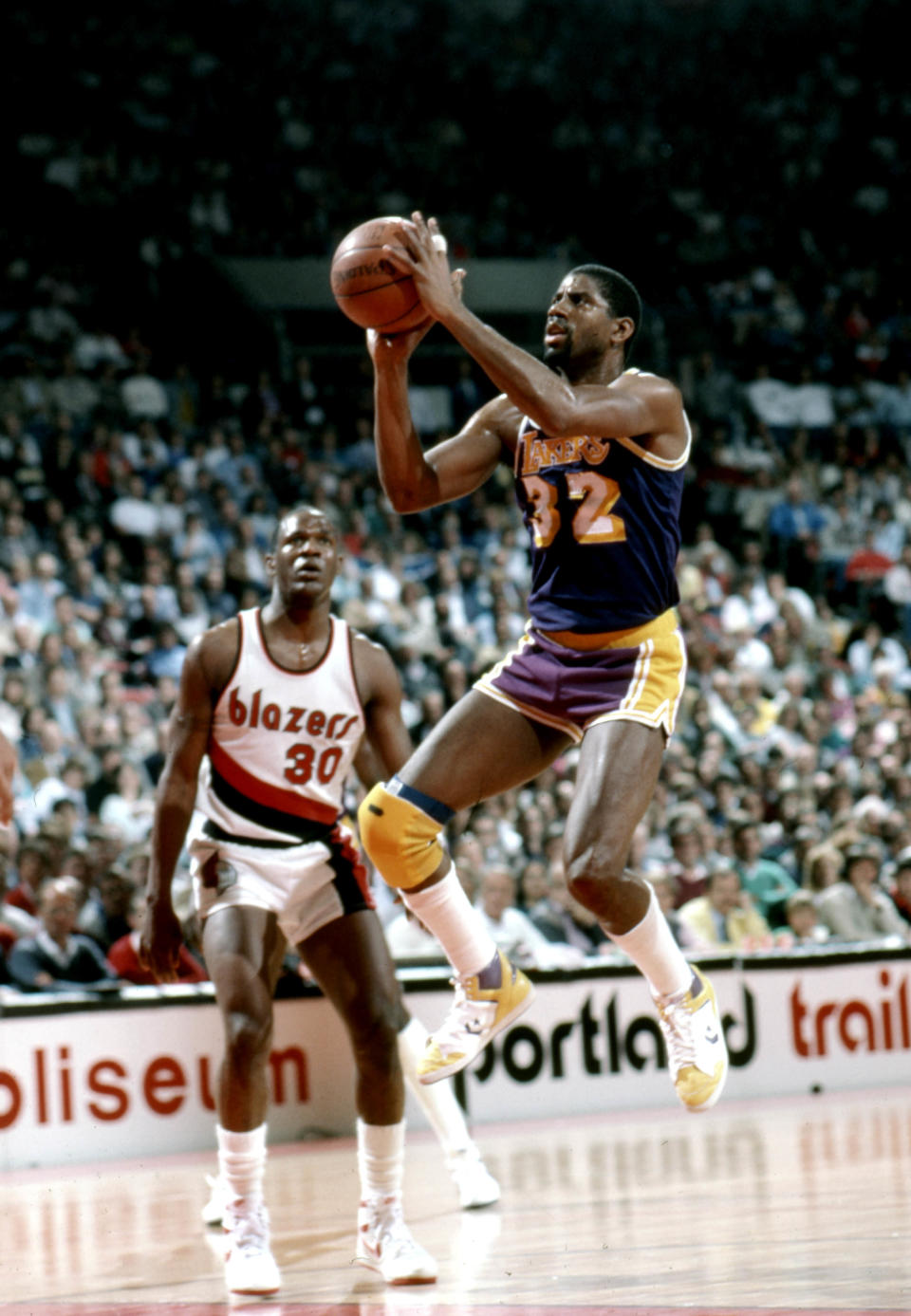
USA TODAY Sports
Regular season stats: 19.7 ppg, 6.4 rpg, 12.5 apg, 0.4 bpg, 1.7 spg, 53.1 FG%
Playoff stats: 19.6 ppg, 6.7 rpg, 13.6 apg, 0.4 bpg, 1.7 spg, 53.0 FG%
Accolades: Two NBA titles, two Finals MVPs, three MVPs, five All-Stars, one All-Star Game MVP, five All-NBA 1st Team selections.
Overall GOAT ranking: No. 4
One of the greatest floor generals the sport has ever seen, Magic Johnson had flash and audacity as a passer, as his highlight reel is filled with passes we rarely – if ever – see attempted today. Johnson, despite not being much of a shooter, could also score by getting to the basket, attacking in transition or hitting the occasional jumper, so he wasn’t just a table-setter, either.
Standing at 6-foot-9 but with good skill as a ball-handler and solid athleticism, it’s unlikely we’ll ever see another player like Johnson, not when you blend all of the skills he had in his all-around package.
Kobe Bryant (2005-2010)
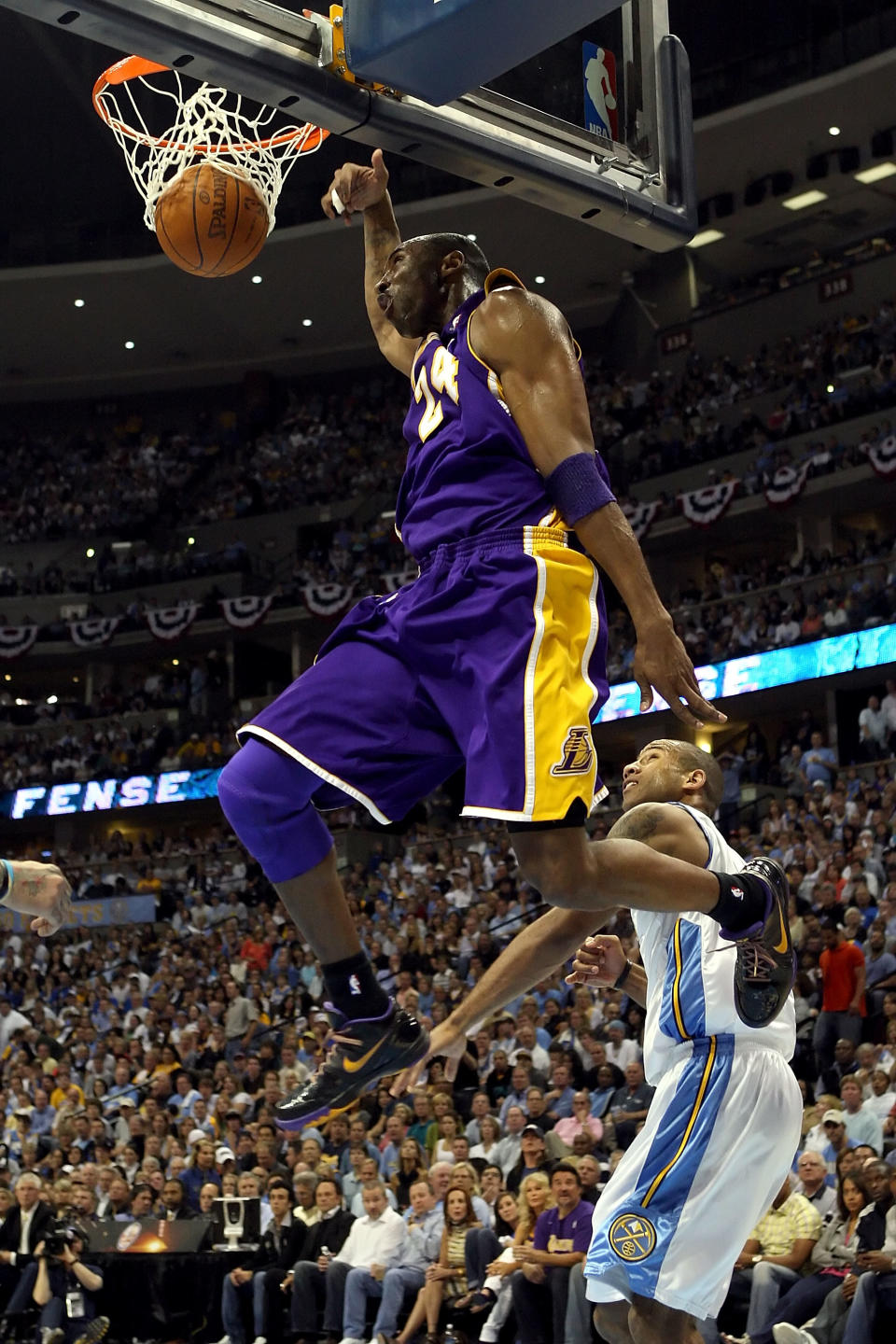
Jed Jacobsohn/Getty Images
Regular season stats: 29.8 ppg, 5.6 rpg, 5.0 apg, 0.4 bpg, 1.6 spg, 45.9 FG%
Playoff stats: 29.8 ppg, 5.7 rpg, 5.4 apg, 0.6 bpg, 1.5 spg, 46.7 FG%
Accolades: Two NBA titles, one MVP, two Finals MVPs, five All-Stars, five All-NBA 1st Team selections, five All-Defensive 1st Team selections.
Overall GOAT ranking: No. 8
The legendary Kobe Bryant’s peak actually came after his first threepeat with the Lakers, which makes sense since O’Neal was the dominant L.A. force over that first stretch of greatness.
What truly cemented Bryan was the second greatest shooting guard of all time was the five-year peak he had to close the 2000s, in which he led the league in scoring twice (once at a whopping 35.4 points per game in 2005-06), won two championships and earned Finals MVP twice.
A brilliant shot-maker who crafted move after move with which to attack foes, Bryant was maybe not the most efficient player ever, but he did go all-out every moment he was on the floor, including on defense, and had a knack for hitting huge shots at pivotal moments.
Stephen Curry (2014-2019)

Kyle Terada – Pool/Getty Images
Regular season stats: 26.5 ppg, 4.9 rpg, 6.5 apg, 0.2 bpg, 1.8 spg, 48.5 FG%
Playoff stats: 27.2 ppg, 5.7 rpg, 5.9 apg, 0.3 bpg, 1.6 spg, 45.3 FG%
Accolades: Three NBA titles, two MVPs, five All-Stars, three All-NBA 1st Team selections, one All-NBA 2nd Team selection, one All-NBA 3rd Team selection.
Overall GOAT ranking: No. 14
One of the few players who can say he legitimately changed the way the game is played, Stephen Curry’s bombastic style of shooting has trickled all the way down to the pre-high school level in the United States, with the sport as a whole now focusing on threes over twos.
A lot of that was Curry’s doing, as his ability to knock down shots from all over the floor, feet set or off the dribble, won him two MVPs and four championships (so far), creating a dynasty with the Golden State Warriors that might not be done collecting hardware.
Tim Duncan (1999-2004)
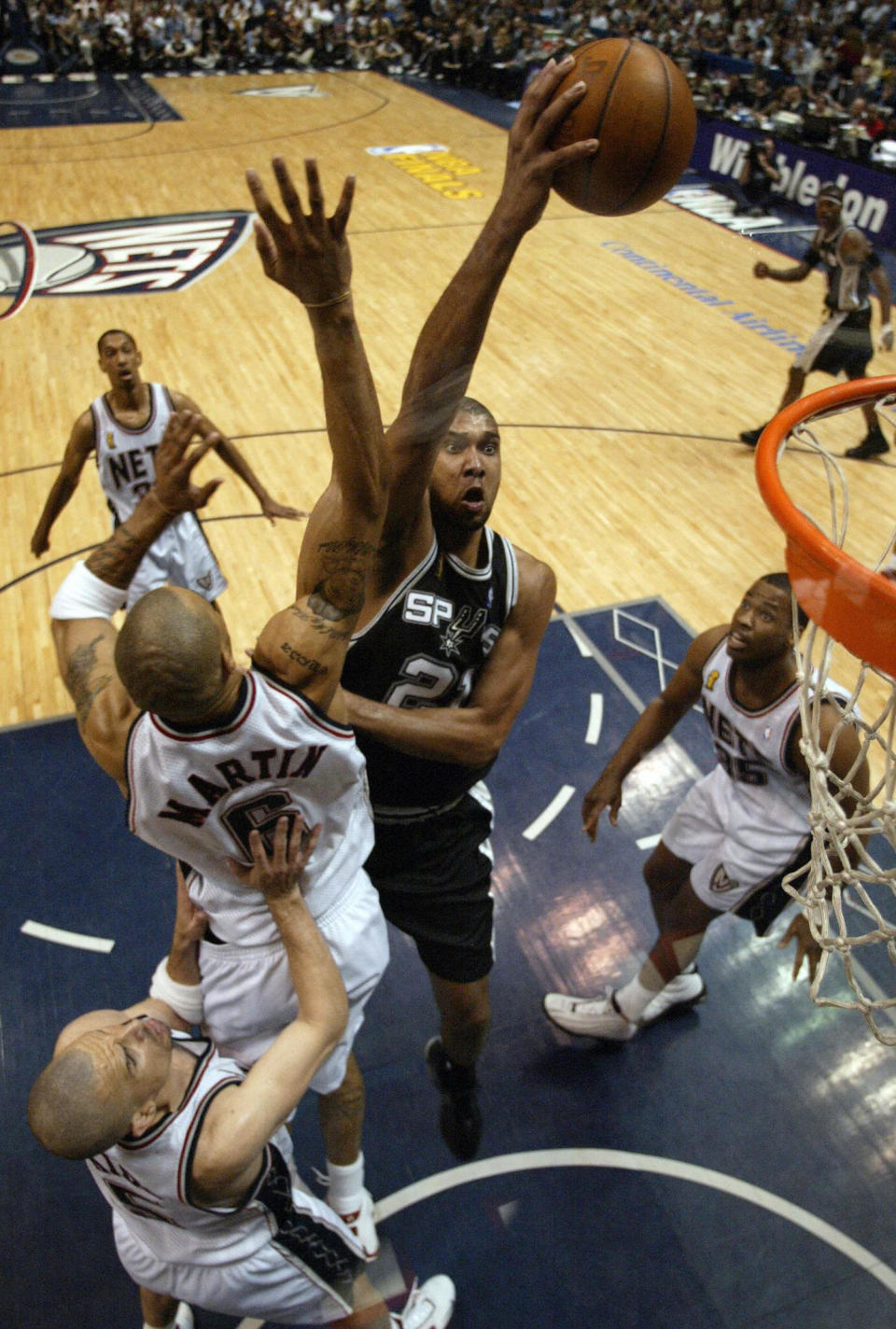
POOL/AFP via Getty Images
Regular season stats: 23.3 ppg, 12.5 rpg, 3.4 apg, 2.5 bpg, 0.8 spg, 50.3 FG%
Playoff stats: 24.6 ppg, 14.3 rpg, 4.5 apg, 3.1 bpg, 0.8 spg, 50.4 FG%
Accolades: One NBA title, two MVPs, one Finals MVP, five All-Stars, five All-NBA 1st Team selections, four All-Defensive 1st Team selections, one All-Defensive 2nd Team selection.
Overall GOAT ranking: No. 10
Speaking of faces of dynasties, Tim Duncan was the leader of the San Antonio Spurs one in the 2000s, using his face-up game, quickness, length and athleticism to dominate the game in a crafty way from the midrange and the low post.
Duncan’s career was more about longevity than some awesome peak, as the Wake Forest legend won just one of his four career championships during what Global Rating considers his five-year peak. One came before it and two after.
There may be more exciting NBA legends to look back on, but Duncan’s quiet dominance was fun to watch in its own right, as you knew very few players had a chance to stop Duncan from doing what he wanted to do on a nightly basis.
Duncan was dominant on both ends of the floor, too, even though he never did win a Defensive Player of the Year award, one of the biggest oversights by voters in NBA history.
Kevin Durant (2012-2017)
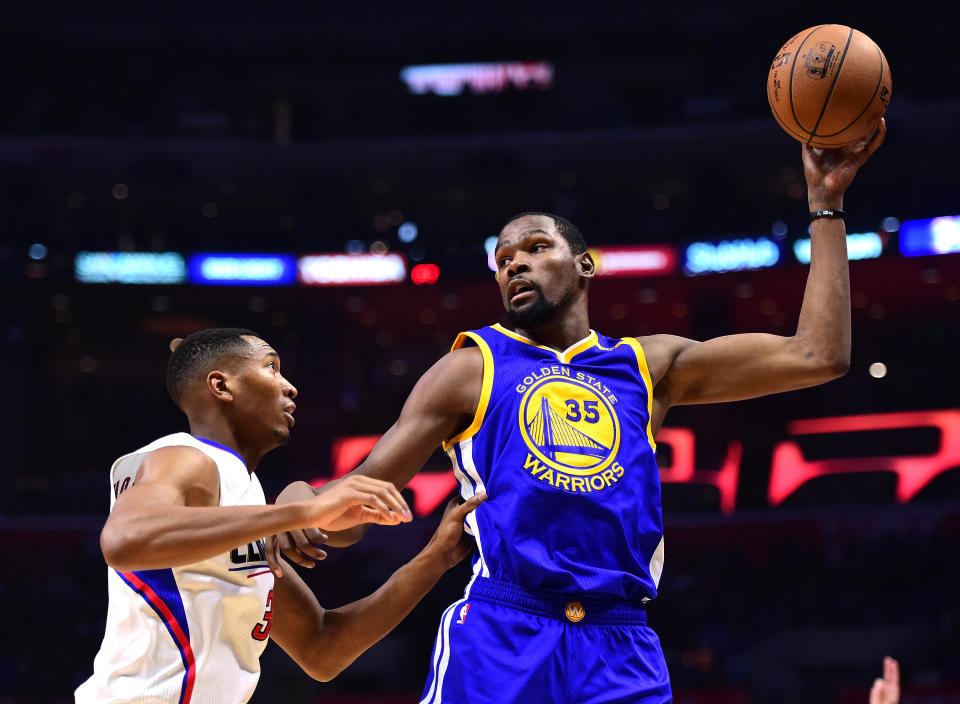
Harry How/Getty Images
Regular season stats: 28.3 ppg, 7.8 rpg, 4.9 apg, 1.2 bpg, 1.2 spg, 51.2 FG%
Playoff stats: 29.2 ppg, 8.2 rpg, 4.3 apg, 1.2 bpg, 1.0 spg, 46.9 FG%
Accolades: One NBA title, one MVP, one Finals MVP, five All-Stars, two All-NBA 1st team selections, two All-NBA 2nd team selections.
Overall GOAT ranking: No. 12
One of the few players who can claim to have outperformed LeBron James in a playoff series, Kevin Durant’s five-year peak stretches over his time with two franchises, starting with the Oklahoma City Thunder and ending after his first season with the Warriors.
Durant led the league in scoring once and in free-throw accuracy once during his five-year peak, one that saw him drop a whole lot of buckets for Oklahoma City and Golden State.
One of the most unique players in league history, a 7-footer with the quickness, ballhandling and shooting ability of a guard in an otherworldy package of height and length, Durant will go down as one of the greatest scorers the league has ever seen, as well as one of its best players overall.
Moses Malone (1978-1983)

Malcolm Emmons-USA TODAY Network.
Regular season stats: 26.8 ppg, 15.4 rpg, 1.7 apg, 1.6 bpg, 1.0 spg, 51.7 FG%
Playoff stats: 26.1 ppg, 15.2 rpg, 1.6 apg, 1.8 bpg, 0.8 spg, 49.7 FG%
Accolades: One NBA title, one Finals MVP, three MVPs, five All-Stars, three All-NBA 1st Team selections, two All-NBA 2nd Team selections, one All-Defensive 1st Team, one All-Defensive 2nd Team.
Overall GOAT ranking: No. 16
As dominant of a big man as the sport has ever seen, Moses Malone was legitimately unstoppable on the glass and a great finisher down low, one who used his freakish strength to overpower foes on a nightly basis.
During his five-year peak, per Global Rating, Malone led the NBA in rebounding four times, topping out at 17.6 nightly boards in 1978-79, one of the highest non-Wilt, non-Russell marks ever.
This was the stretch where Malone teamed up with Julius Erving to win the Philadelphia 76ers a championship in 1982-83, the last time Philadelphia won a championship in the NBA. It was also when Malone won three league MVP awards, as voters rewarded the legendary center for his dominance in the paint.
David Robinson (1992-1997)
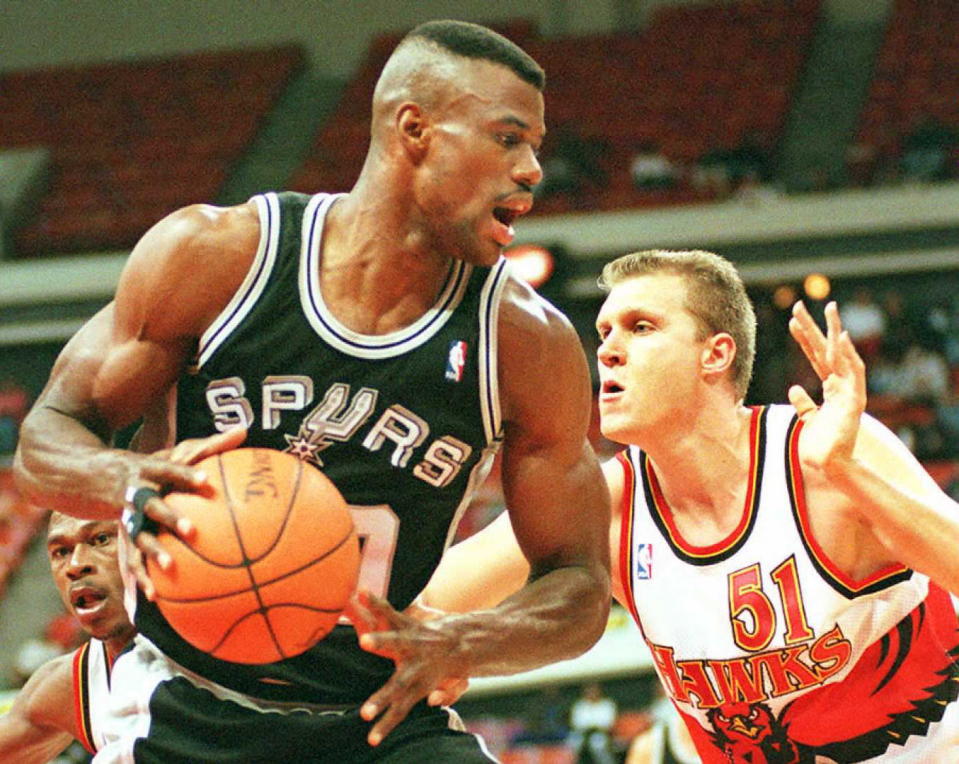
DOUG COLLIER/AFP via Getty Images
Regular season stats: 26.3 ppg, 11.3 rpg, 3.5 apg, 3.2 bpg, 1.6 spg, 51.3 FG%
Playoff stats: 23.8 ppg, 11.5 rpg, 3.2 apg, 2.8 bpg, 1.3 spg, 46.3 FG%
Accolades: One MVP, four All-Stars, two All-NBA 1st team selections, two All-NBA 2nd team selections, one All-NBA 3rd team selections, two All-Defensive 1st Team selections, two All-Defensive 2nd Team selections.
Overall GOAT ranking: No. 24
If not for Olajuwon, David Robinson would be considered the best center of the ’90s.
Sure, Robinson didn’t quite back up that one MVP award in the playoffs when he faced Olajuwon, famously getting… badly outplayed in that 1995 playoff series against the Houston Rockets…
…but it’s not like The Admiral didn’t deserve the award. He averaged 27.6 points, 10.8 rebounds, 1.7 steals and 3.2 blocks that season, leading the San Antonio Spurs to a 62-20 campaign in the process.
That illustrious season came a year after Robinson led the league in scoring at 29.8 points per game, too, proving what type of monster the 7-foot lefty was in his heyday.
Nikola Jokic (2018-2023)
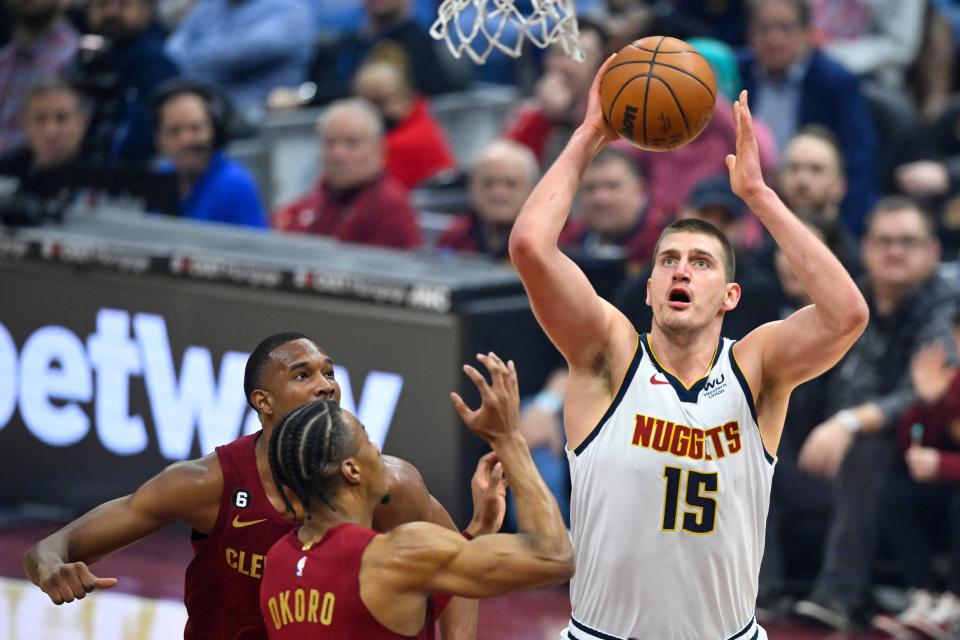
David Richard-USA TODAY Sports
Regular season stats: 23.5 ppg, 11.3 rpg, 8.0 apg, 0.7 bpg, 1.3 spg, 56.0 FG%
Playoff stats: 26.4 ppg, 11.5 rpg, 6.4 apg, 0.9 bpg, 1.0 spg, 51.9 FG%
Accolades: Two MVPs, five All-Stars, three All-NBA 1st Team selections, one All-NBA 2nd team selection.
Overall GOAT ranking: No. 58
If we do this exercise again in a few years, it will be interesting to see where Jokic ranks, as the Serbian big man, at the time of this writing, is on his way to a third straight MVP season and looks to be getting better if anything.
We have never seen a player like Jokic before, a center with his point-guard-like playmaking ability who is an elite rebounder and can score as efficiently as anyone in the history of the league.
He may be somewhat defensively deficient and his detractors do have the fact he has yet to hoist a Larry O’Brien trophy to hold against him, but that’s hardly through any fault of his own, as Jokic has led the Denver Nuggets to some very solid seasons despite not having much help.
The discussion gets a whole lot more interesting if and when Jokic does win his first championship. Regardless, he’s one of the best players ever already, one with many great days ahead, to be sure.
Karl Malone (1994-1999)
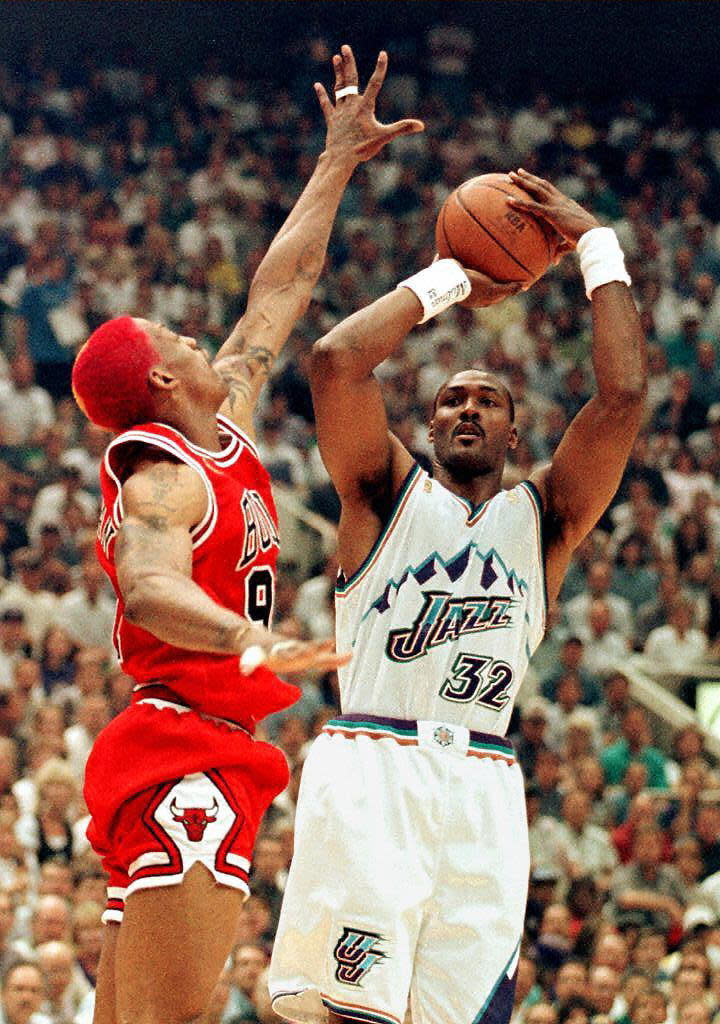
PAUL K. BUCK/AFP via Getty Images
Regular season stats: 26.3 ppg, 10.1 rpg, 4.0 apg, 0.8 bpg, 1.4 spg, 52.9 FG%
Playoff stats: 25.9 ppg, 11.1 rpg, 3.7 apg, 0.7 bpg, 1.4 spg, 45.3 FG%
Accolades: Two MVPs, four All-Stars, five All-NBA 1st Team Selections, three All-Defensive 1st Team selections.
Overall GOAT ranking: No. 15
Karl Malone had a long, accolade-filled career, with his longevity being even more impressive than his peak, though that’s not to say his peak wasn’t ridiculous, either.
Malone won two league MVP awards during his five-year prime, per Global Rating, was considered the best power forward in basketball all five of those seasons and even took the Utah Jazz to two NBA Finals during that time, falling just short of winning a championship because of that Jordan guy.
The Mailman was a bruiser, burly with strength though feathery with his touch around the basket and from the midrange, able to beat foes with his post-up and face-up game.
Oscar Robertson (1961-1966)

Dick Raphael/NBAE via Getty Images
Regular season stats: 30.4 ppg, 9.9 rpg, 10.9 apg, 48.6 FG%
Playoff stats: 30.3 ppg, 9.9 rpg, 9.2 apg, 45.6 FG%
Accolades: One MVP, five All-Stars, five All-NBA 1st Team selections, one Rookie of the Year award.
Overall GOAT ranking: No. 13
Few players on this list can boast the numbers Oscar Robertson put up over his five-year peak, nearly averaging a 30/10/11 triple-double over that time frame while winning a league MVP award and being named 1st Team All-NBA all five times.
Robertson’s game would have fit in wonderfully today, with his ability to do everything as a guard, score from distance and near the cup, rebound, create, shoot off the dribble – you name it.
Sure, Robertson’s peak did coincide with the NBA playing at a frenetic pace, helping boost his averages a bit but even so, a 30/10/11 stat line over five seasons is absolutely ridiculous. There’s a reason The Big O is so highly thought of by other NBA legends.
Elgin Baylor (1960-1965)
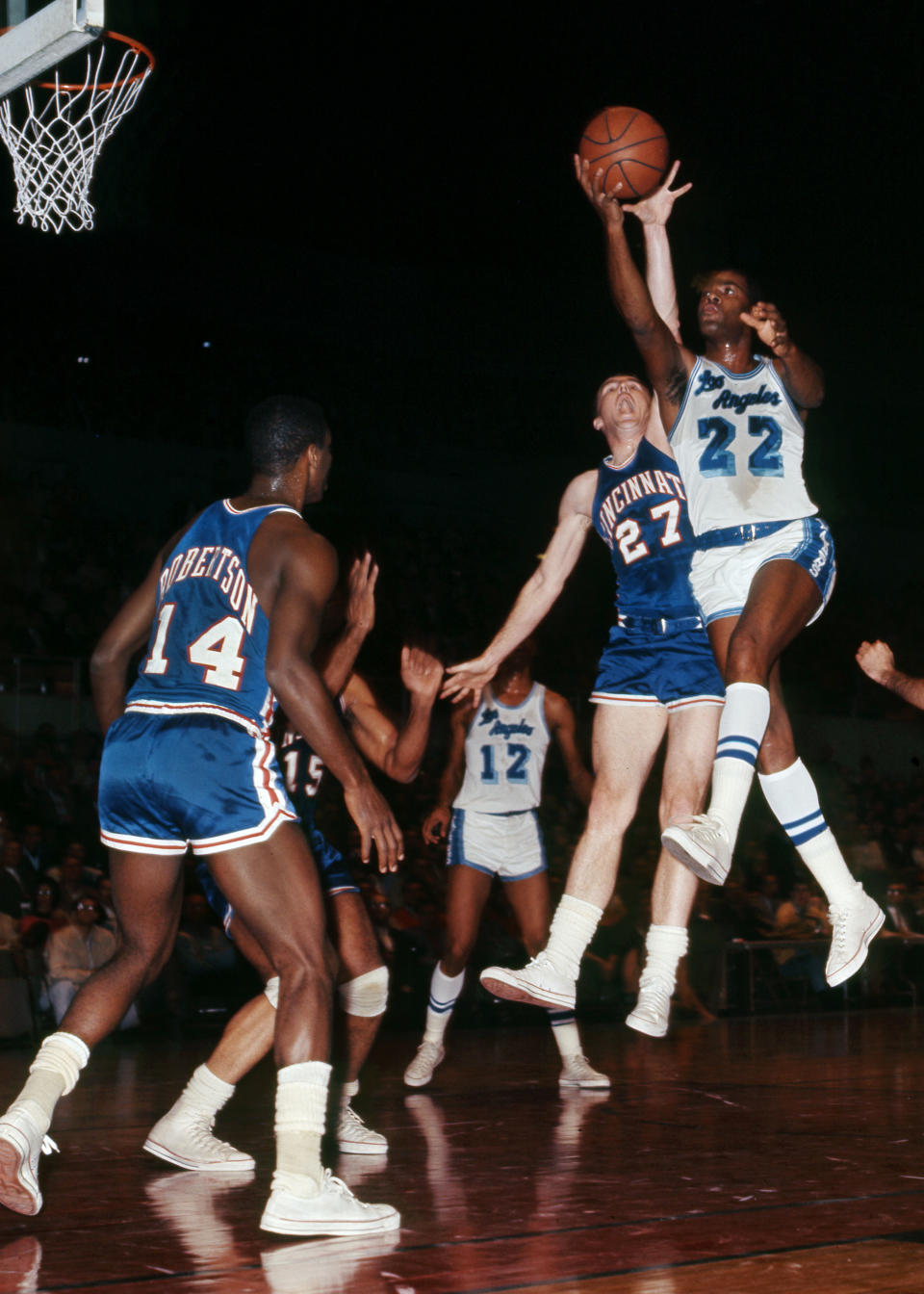
Darryl Norenberg-USA TODAY Sports
Regular season stats: 31.4 ppg, 15.2 rpg, 4.5 apg, 42.8 FG%
Playoff stats: 34.2 ppg, 14.7 rpg, 4.3 apg, 44.2 FG%
Accolades: Five All-Stars, five All-NBA 1st team selections.
Overall GOAT ranking: No. 21
Like Robertson, Elgin Baylor put up some truly insane stats during the early ’60s, though he did so a bit differently, playing as more of a swingman than his counterpart.
Baylor is considered one of the first small forwards to somewhat resemble the swingmen of today, using otherworldly athleticism to dominate less athletic foes, soaring through the air to throw down dunks or finish with his never-ending layup package.
It’s unfortunate Baylor got injured when he did, playing just 11 games over his final two seasons, deciding to retire the year the Lakers finally broke through and won the 1971-72 championship. The Hall-of-Fame forward deserved at least one ring for what he contributed to the game.
Kevin Garnett (2001-2006)
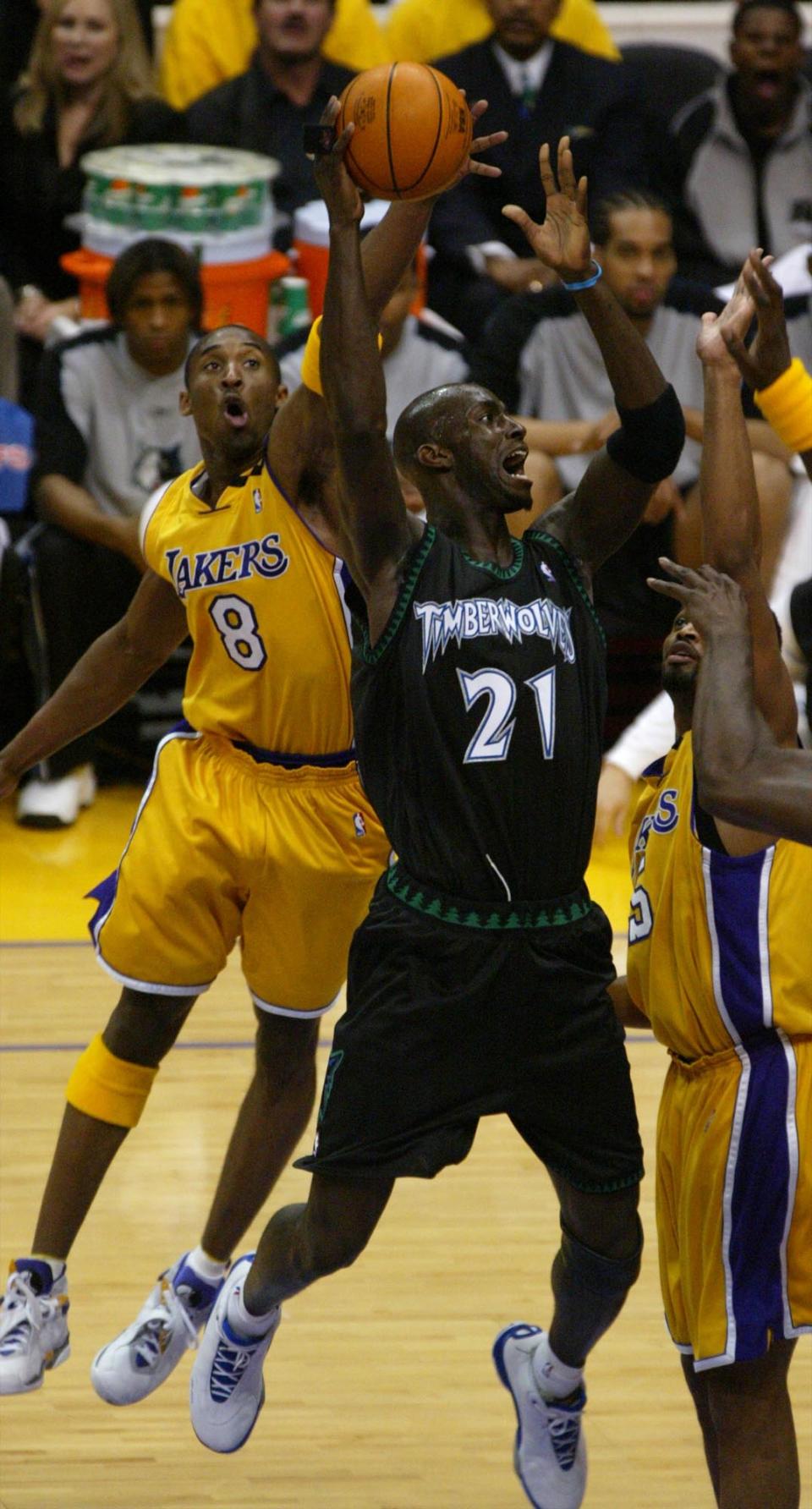
STEWART COOK/AFP via Getty Images
Regular season stats: 22.5 ppg, 13.1 rpg, 5.2 apg, 1.6 bpg, 1.4 spg, 49.9 FG%
Playoff stats: 24.9 ppg, 15.3 rpg, 5.1 apg, 2.1 bpg, 1.4 spg, 46.5 FG%
Accolades: One MVP, five All-Stars, two All-NBA 1st teams, three All-Defensive 1st team selections, two All-Defensive 2nd team selection.
Overall GOAT ranking: No. 18
One of the NBA’s toughest two-way forces ever, Kevin Garnett was a unicorn before the age of unicorns, a big man with elite size, length and athleticism who still had the skill to grab a rebound and bring the ball down himself.
A face-up menace with post moves and the burst to blow by fellow big men, Garnett was also a monster defensively, protecting the rim at a high level but also having the ability to switch onto guards and stay in front of them. Garnett was also an underrated playmaker, often setting up teammates for easy looks when defenses would key in on stopping him.
It’s sad Garnett’s peak years were wasted on a Minnesota Timberwolves team that did a porous job of putting top players around him, though at least he did get out when he did to win the lone championship of his career in 2007-08 as a member of the Boston Celtics.
James Harden (2017-2022)
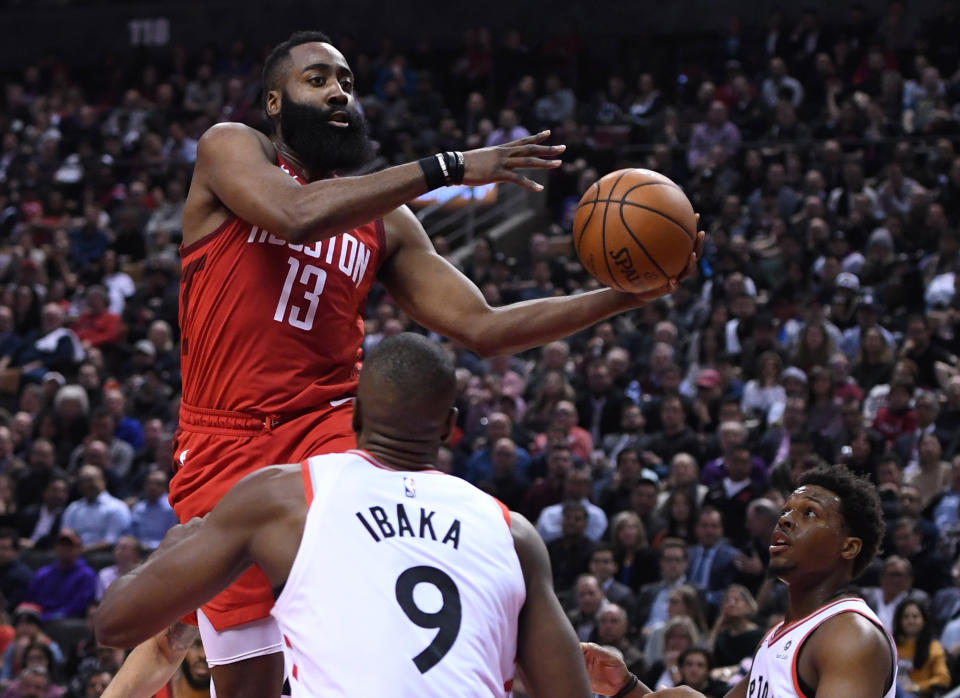
Dan Hamilton-USA TODAY Sports
Regular season stats: 30.1 ppg, 6.7 rpg, 8.8 apg, 0.7 bpg, 1.7 spg, 44.2 FG%
Playoff stats: 26.1 ppg, 5.9 rpg, 7.6 apg, 0.7 bpg, 1.7 spg, 43.0 FG%
Accolades: One MVP, four All-Stars, three 1st team All-NBA selections.
Overall GOAT ranking: No. 39
Our voters dinged James Harden a bit for his playoff shortcomings during his five-year peak, as the bearded superstar wasn’t able to get the Rockets to the Finals even once during his time there, in part because he wasn’t able to get to the foul line as easily in the postseason when referees tend to swallow their whistles.
Still, there’s no doubt Harden established himself as one of the best shooting guards in league history during his five-year peak, leading the league in scoring three times in that stretch, including at 36.1 points per game in 2019-20, the highest non-Wilt, non-Jordan scoring average the NBA has ever seen.
Had Harden been able to have more team success in Houston, there’s no doubt he’d rank far higher on this list, as his numbers during his prime were truly ridiculous.
Charles Barkley (1986-1991)
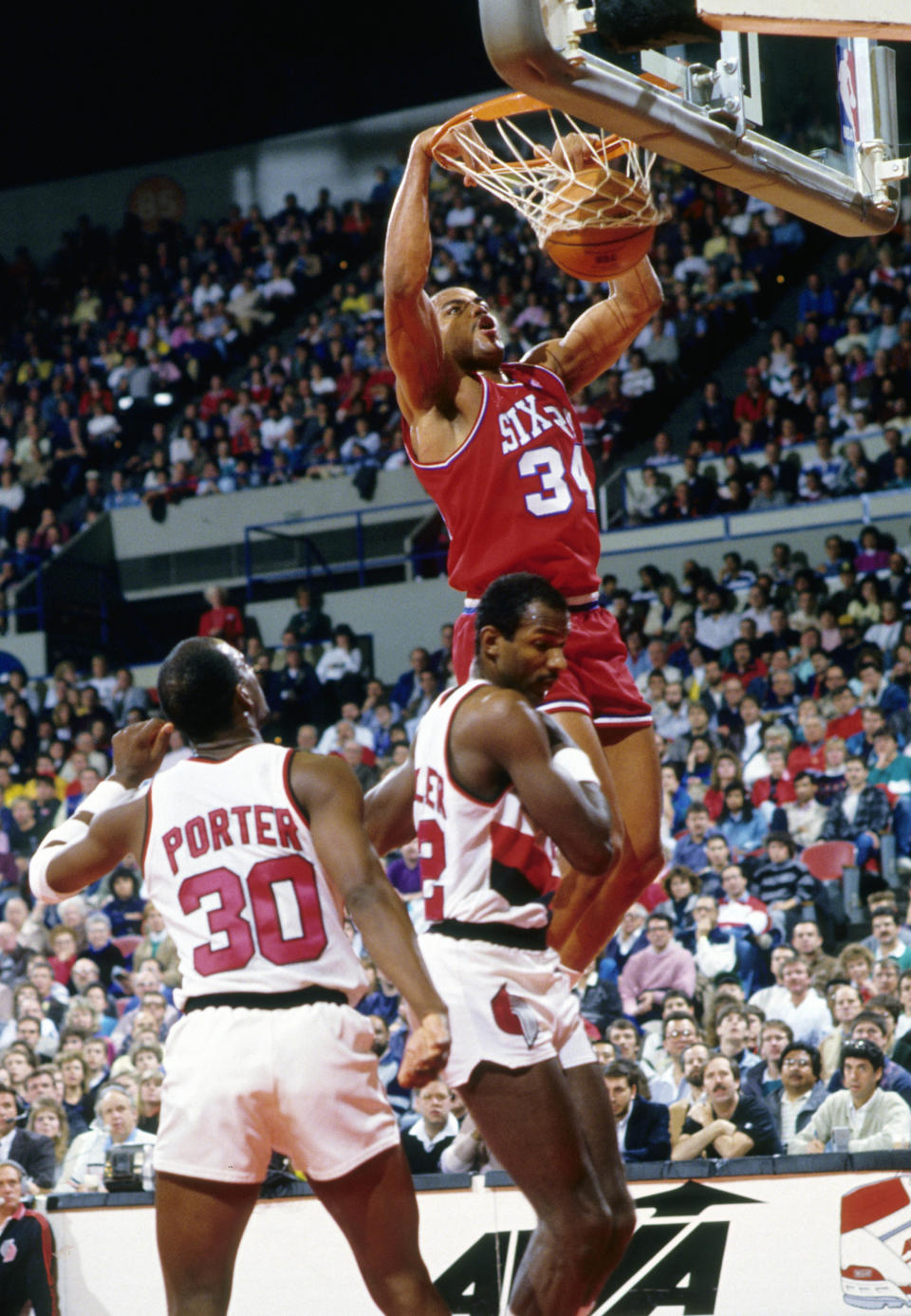
USA TODAY Sports
Regular season stats: 26.0 ppg, 12.1 rpg, 4.0 apg, 1.0 bpg, 1.6 spg, 58.6 FG%
Playoff stats: 25.0 ppg, 13.0 rpg, 4.6 apg, 0.8 bpg, 1.2 spg, 57.5 FG%
Accolades: Five All-Stars, four All-NBA 1st Team selections, one All-NBA 2nd Team selections.
Overall GOAT ranking: No. 25
Another player dinged for a lack of team hardware, Charles Barkley’s five-year peak, according to Global Rating, actually came before his 1992-93 MVP campaign when he led the Phoenix Suns to the Finals.
Barkley was absolutely dominant during his five-year peak, unstoppable down low despite his lack of height, not only averaging 12.1 rebounds over that stretch but also leading the league in two-point percentage all five seasons, shooting 63.1 percent from two over that stretch.
He did that while generously being listed at 6-foot-6, by the way, making his accomplishments as an all-time great big man impossible to fathom. He’s mostly known for his media accolades now but don’t get it mistaken: Barkley was a monstrous player in his heyday, with a skill set we’ll likely never see again out of a player with his size.
Jerry West (1967-1972)
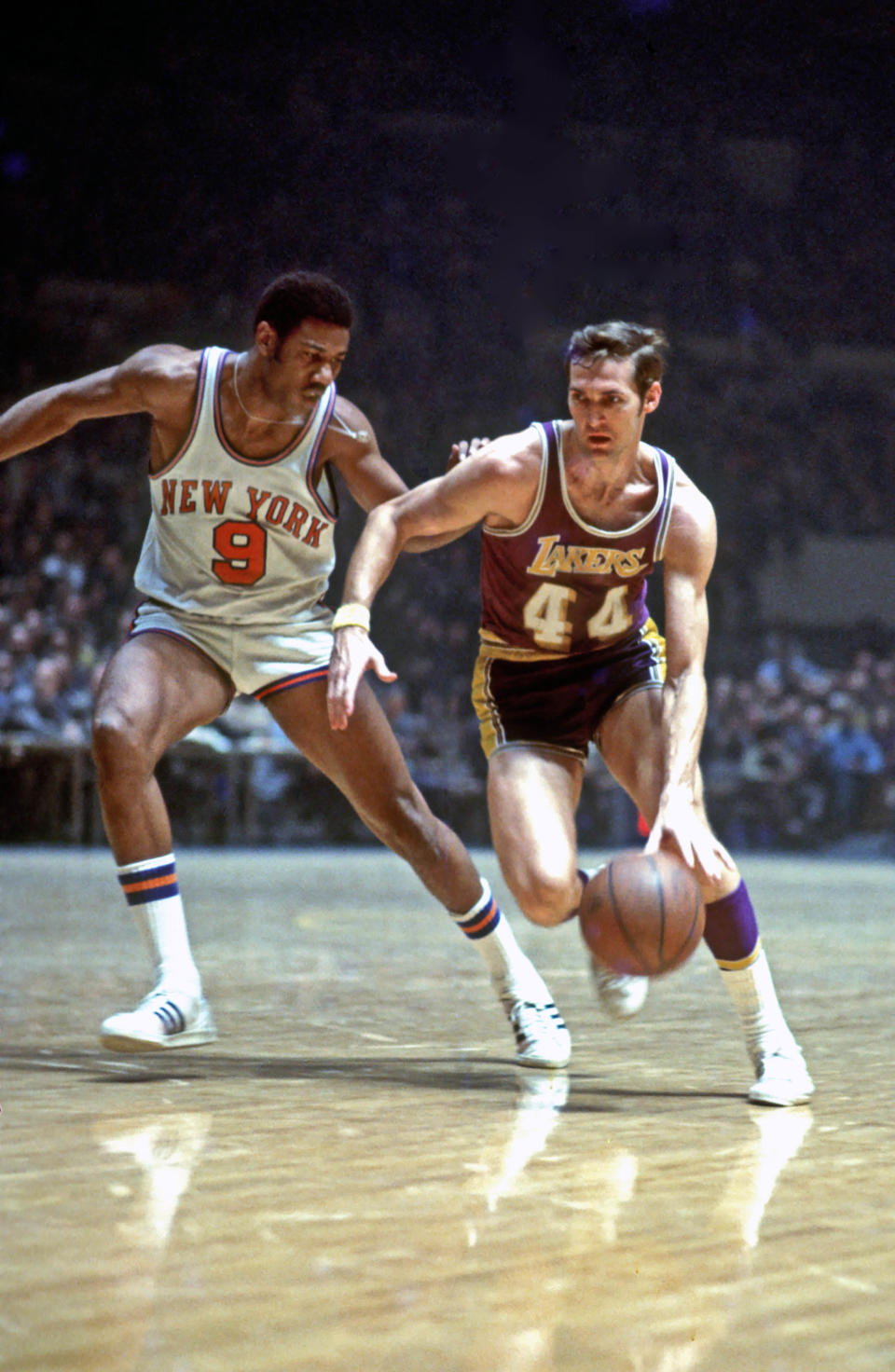
Manny Rubio-USA TODAY Sports
Regular season stats: 27.3 ppg, 4.6 rpg, 8.1 apg, 49.0 FG%
Playoff stats: 29.2 ppg, 4.4 rpg, 7.6 apg, 45.9 FG%
Accolades: One NBA title, five All-Stars, one Finals MVP, three 1st Team All-NBA selections, two 2nd Team All-NBA selections, three 1st Defensive Team selections, one 2nd Defensive team selection.
Overall GOAT ranking: No. 17
Considered one of the best guards in league history, The Logo Jerry West had a buttery smooth jumper, one that he could knock down from all over the floor, with his feet set or off the dribble, making him a player who likely would have had success no matter what era he played in.
West was also an excellent playmaker and a clutch performer, who would thrive late in games in pivotal situations.
Over his five-year peak, West would lead the league in scoring once at 31.2 points per game and in assists once at 9.7, the latter feat coming in the 1971-72 season when West finally broke through and lifted the Larry O’Brien trophy.
Luka Doncic (2018-2023)

Kevin Jairaj-USA TODAY Sports
Regular season stats: 27.6 ppg, 8.6 rpg, 8.0 apg, 0.4 bpg, 1.1 spg, 46.7 FG%
Playoff stats: 32.5 ppg, 9.3 rpg, 7.9 apg, 0.5 bpg, 1.5 spg, 47.3 FG%
Accolades: Four All-Stars, three All-NBA 1st Team selections, one Rookie of the Year award, one All-Rookie 1st Team selection.
Like Jokic, Luka Doncic is a player who could see himself rising up these rankings if and when we re-do this exercise, as the Slovenian superstar mightly only be tapping into his full potential.
How might his game improve once he improves his fitness level, for example?
If it improves at all, that would be a scary proposition for foes, as Doncic is one of the best players in the league as is, a three-level scorer, elite rebounder and playmaker for his position and a clutch performer, one who is already knocking on the door of his first career league MVP award, an accomplishment we could easily see coming over the next few seasons.
[lawrence-related id=1747013]
[lawrence-related id=1751748]
Story originally appeared on HoopsHype

